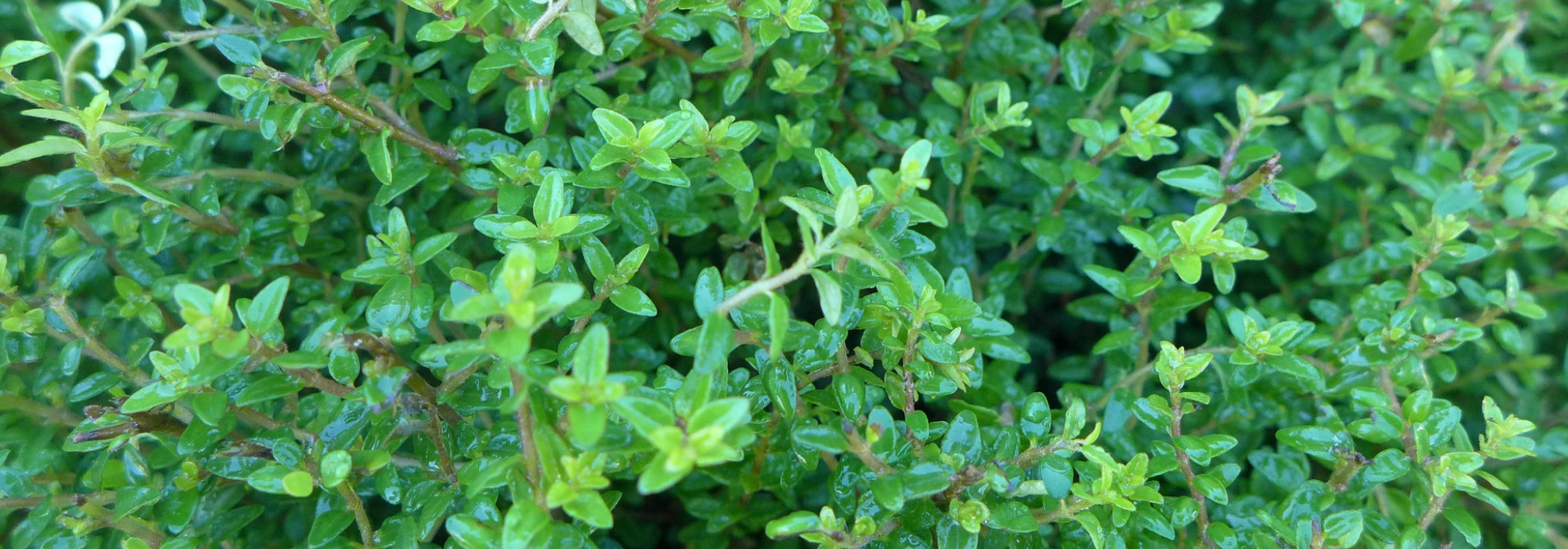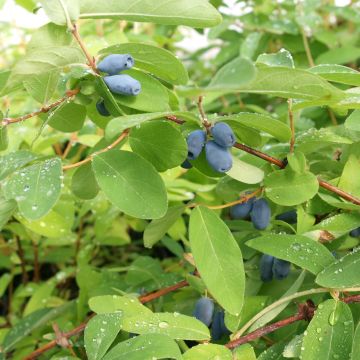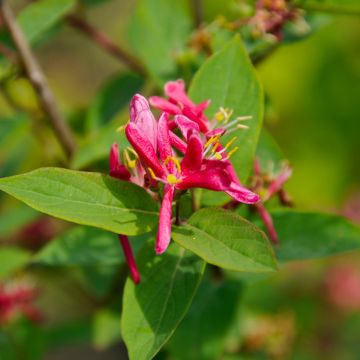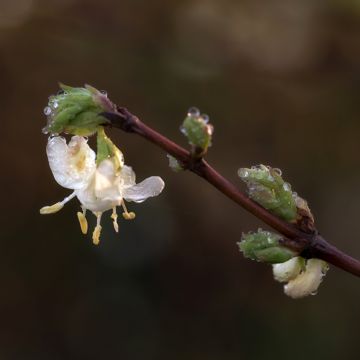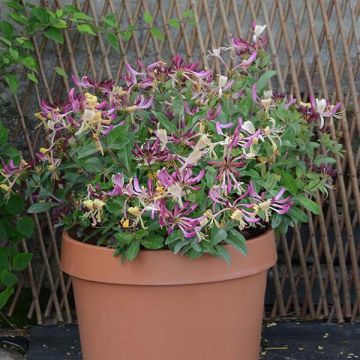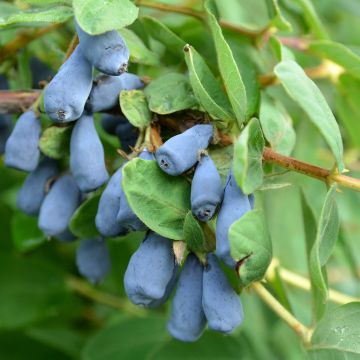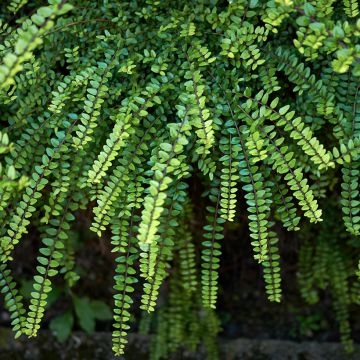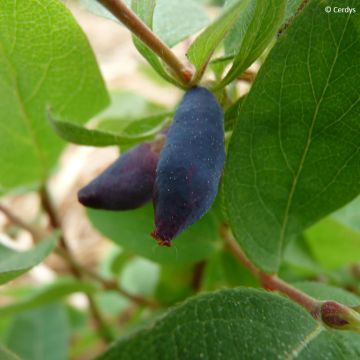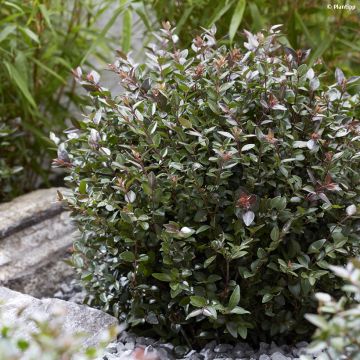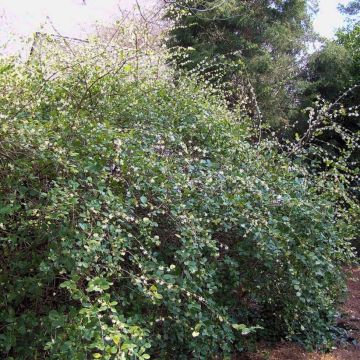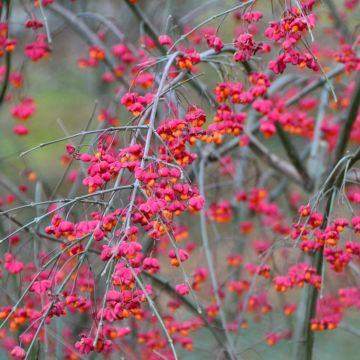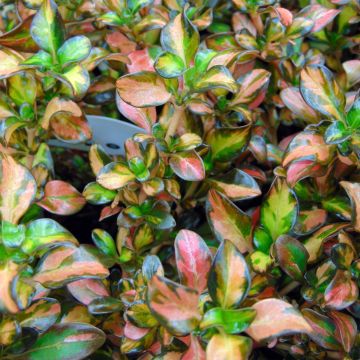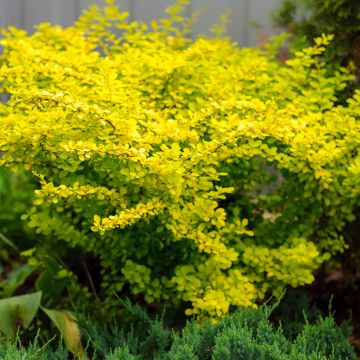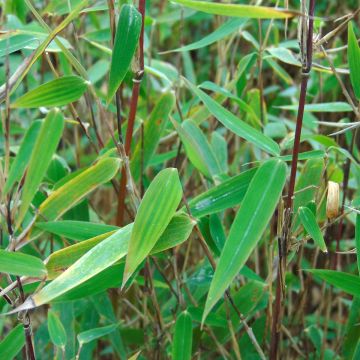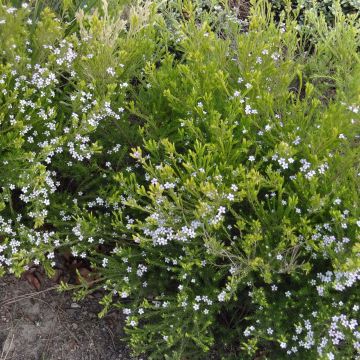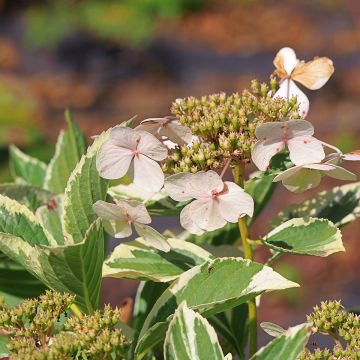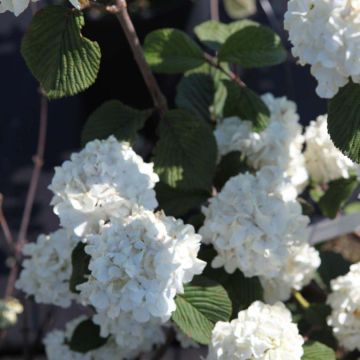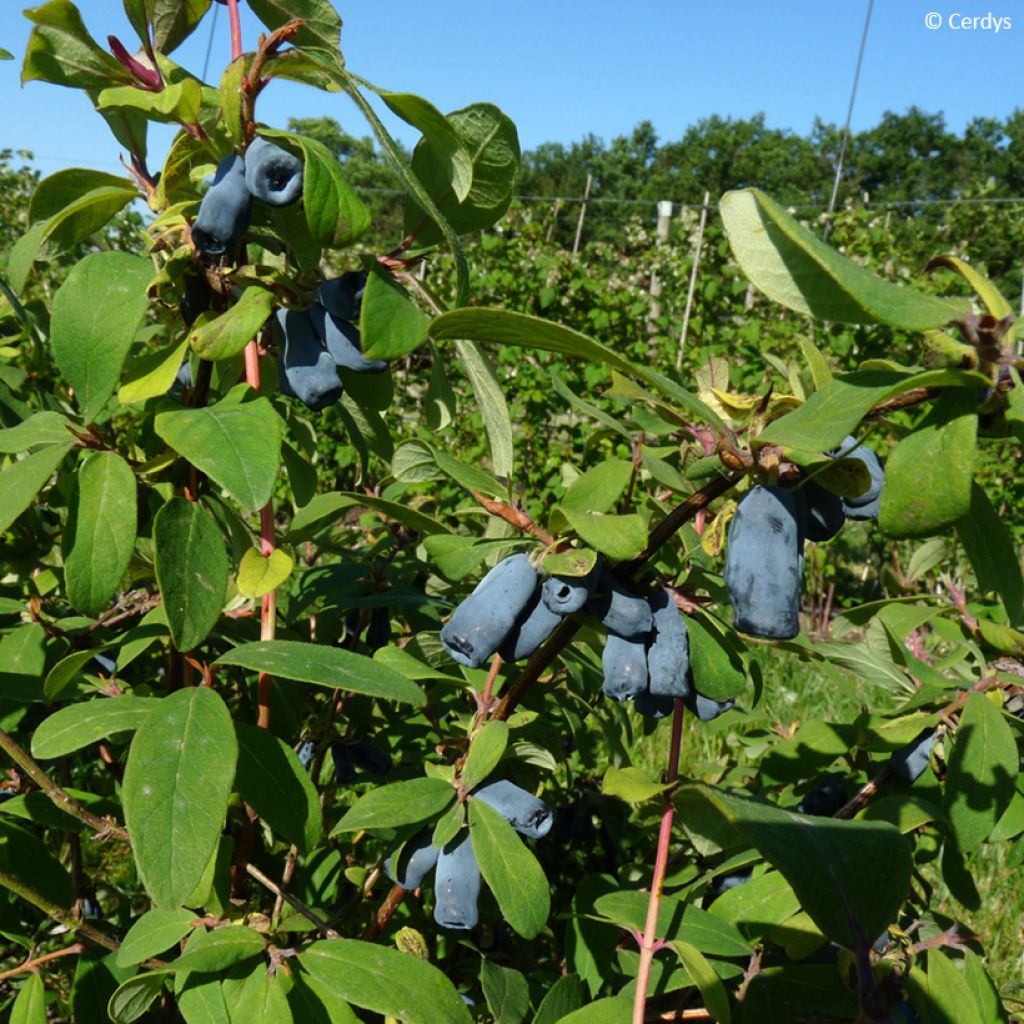

Lonicera caerulea var. kamtschatica Martin - May Berry
Lonicera caerulea var. kamtschatica Martin - May Berry
Lonicera caerulea var. kamtschatica Martin
Honeyberry
Special offer!
Receive a €20 voucher for any order over €90 (excluding delivery costs, credit notes, and plastic-free options)!
1- Add your favorite plants to your cart.
2- Once you have reached €90, confirm your order (you can even choose the delivery date!).
3- As soon as your order is shipped, you will receive an email containing your voucher code, valid for 3 months (90 days).
Your voucher is unique and can only be used once, for any order with a minimum value of €20, excluding delivery costs.
Can be combined with other current offers, non-divisible and non-refundable.
Home or relay delivery (depending on size and destination)
Schedule delivery date,
and select date in basket
This plant carries a 6 months recovery warranty
More information
We guarantee the quality of our plants for a full growing cycle, and will replace at our expense any plant that fails to recover under normal climatic and planting conditions.
Description
Lonicera caerulea var. kamtschatica 'Martin' is a variety of honeysuckle with edible fruits, hardy and robust, with abundant fruiting. Its drupes, elongated, 2 to 3 cm (1in) long, contain juicy flesh with a sweet and tangy flavour. Reminiscent of the taste of blueberries, it stands out for its richness in vitamins B and C, and antioxidants, five times higher. Delicious and pleasant to the taste, they are best enjoyed fresh, as soon as they are harvested in May. Consumption can be extended once dried or transformed into juice, jellies or jams. Hardy to -40°C (-40°F), this honeyberry thrives in the sun, but not too hot, in ordinary soil, acidic to neutral, without limestone. Forming a dense and fairly compact bush, about 1.50 m (5ft) high, it grows equally well planted in the garden or in a pot. Partially self-fertile, it is recommended to plant at least two plants, close to each other to improve fruiting. In March, the cream-white flowering, slightly fragrant, but very melliferous, attracts bees, thus promoting pollination. It is ideal for creating a small edible and decorative hedge, and can even be combined with other varieties of small fruits.
Lonicera caerulea var. kamtschatica, more commonly known as Honeyberry, is a shrub species of the Caprifoliaceae family, like all honeysuckles. It is native to Eastern Europe, particularly Russia and Siberian Asia, from Kamchatka to Magadan to Sakhalin Island. The edible honeysuckle has been known and consumed for a long time by indigenous populations. It is an adept of cold regions, as it can withstand -40°C (-40°F), but only -7°C (19.4°F) for its flowers. It is an interesting shrub for mountain gardens.
The 'Martin' variety is a Russian cultivar that forms a bushy, branching shrub, 1.50 m (5ft) high and 1 m (3ft) wide. The foliage is deciduous, composed of opposite, ovate, dark green leaves, slightly grayish blue, 3 to 8 cm (1 to 3in) long. Flowering occurs from March, in the form of tubular flowers, blooming in pairs, yellowish-green, quite inconspicuous, intensely visited by bees. In May-June, fruiting occurs mainly on one- and two-year-old branches. The bush is then covered with elongated, slightly pointed berries, pruinose blue in colour, 2 to 3 cm (1in) long, 0.6 to 0.9 cm (0.4in) in diameter, weighing about 1g, with a honey scent. They contain very small seeds that are not noticeable when eaten. The drupe is filled with a yellowish-green, juicy, sweet and tangy pulp, similar to that of blueberries in both flavour and appearance. The harvest is staggered as the fruits ripen, when their flesh turns red. The yield of a honeyberry plant is approximately 4 to 5 kg of fruit per plant, depending on the age and cultivation conditions of the plant. To improve fruiting, it is preferable to plant at least two plants. Being melliferous, the flowers will attract bees for good pollination. The fruits are rich in vitamins B and C, fiber, minerals, and well supplied with antioxidants.
In the kitchen: Once harvested, the honeyberries only keep for 2 to 3 days in the refrigerator, preferably in the vegetable drawer. The fruits of the Martin honeyberry can be enjoyed fresh, and for more indulgence, they can be sprinkled with a little granulated sugar. Excellent in jellies or jams, they can also be used to make fruit salads, muffins or smoothies, tarts... and also very fruity, slightly acidic juices. When dried, the berries retain all their nutritional values. To extend the enjoyment, the fruits can easily be frozen.
The Honeyberry is ideal for transforming your garden into an edible or rustic hedge. It thrives in sunny positions, but sheltered from the burning sun, in fertile soil low in limestone. For delicious harvests and tastings, it can be combined with raspberries, currants or thornless blackberries, blueberries, cranberries, or even Goji berries (Lycium barbarum) or other varieties of small fruits. It can even be planted in a container on a patio to fully enjoy this beautiful shrub. For a colourful decoration, ornamental shrubs like lilacs, mock oranges, abelias or Kolkwitzia will do the trick, taking care, however, that their root system does not encroach on the living space of our blue honeysuckle. From spring onwards, fully savour the fragrance of the Honeyberry!
Plant habit
Fruit
Flowering
Foliage
Botanical data
Lonicera
caerulea var. kamtschatica
Martin
Caprifoliaceae
Honeyberry
Cultivar or hybrid
Other Honeysuckle
View all →Planting and care
The honeyberry appreciates damp, moist soil and, conversely, dreads dry and very chalky soil (optimal pH of 5 to 7). Choose a sunny or partially shaded exposure in hot regions. It seems to be suited to a wide range of soil textures, ranging from sandy to clay soils, but prefers soil rich in organic matter, which remains fresh in the summer. Conversely, it languishes and eventually declines in shallow and dry soils. Planting is done in autumn or spring, outside of the freezing period. Space the plants 0.80 to 1.20 m (3 to 4ft) apart.
Soak the root ball for a few moments before planting. A compost addition is necessary at planting and once a year. Since the honeyberry dislikes dry soil, provide a mud mixture of water and potting soil at the bottom of the planting hole. Plant the young plant, cover with soil, and firm the soil to form a small watering basin. Water.
During the summer, water regularly during dry periods, and apply a mulch at the base to retain moisture. In case of aphid attack, spray with black soap.
Cultivation in a pot is possible by being vigilant in maintaining a good level of humidity through regular watering.
Planting period
Intended location
Care
Planting & care advice
This item has not been reviewed yet - be the first to leave a review about it.
Similar products
Haven't found what you were looking for?
Hardiness is the lowest winter temperature a plant can endure without suffering serious damage or even dying. However, hardiness is affected by location (a sheltered area, such as a patio), protection (winter cover) and soil type (hardiness is improved by well-drained soil).

Photo Sharing Terms & Conditions
In order to encourage gardeners to interact and share their experiences, Promesse de fleurs offers various media enabling content to be uploaded onto its Site - in particular via the ‘Photo sharing’ module.
The User agrees to refrain from:
- Posting any content that is illegal, prejudicial, insulting, racist, inciteful to hatred, revisionist, contrary to public decency, that infringes on privacy or on the privacy rights of third parties, in particular the publicity rights of persons and goods, intellectual property rights, or the right to privacy.
- Submitting content on behalf of a third party;
- Impersonate the identity of a third party and/or publish any personal information about a third party;
In general, the User undertakes to refrain from any unethical behaviour.
All Content (in particular text, comments, files, images, photos, videos, creative works, etc.), which may be subject to property or intellectual property rights, image or other private rights, shall remain the property of the User, subject to the limited rights granted by the terms of the licence granted by Promesse de fleurs as stated below. Users are at liberty to publish or not to publish such Content on the Site, notably via the ‘Photo Sharing’ facility, and accept that this Content shall be made public and freely accessible, notably on the Internet.
Users further acknowledge, undertake to have ,and guarantee that they hold all necessary rights and permissions to publish such material on the Site, in particular with regard to the legislation in force pertaining to any privacy, property, intellectual property, image, or contractual rights, or rights of any other nature. By publishing such Content on the Site, Users acknowledge accepting full liability as publishers of the Content within the meaning of the law, and grant Promesse de fleurs, free of charge, an inclusive, worldwide licence for the said Content for the entire duration of its publication, including all reproduction, representation, up/downloading, displaying, performing, transmission, and storage rights.
Users also grant permission for their name to be linked to the Content and accept that this link may not always be made available.
By engaging in posting material, Users consent to their Content becoming automatically accessible on the Internet, in particular on other sites and/or blogs and/or web pages of the Promesse de fleurs site, including in particular social pages and the Promesse de fleurs catalogue.
Users may secure the removal of entrusted content free of charge by issuing a simple request via our contact form.
The flowering period indicated on our website applies to countries and regions located in USDA zone 8 (France, the United Kingdom, Ireland, the Netherlands, etc.)
It will vary according to where you live:
- In zones 9 to 10 (Italy, Spain, Greece, etc.), flowering will occur about 2 to 4 weeks earlier.
- In zones 6 to 7 (Germany, Poland, Slovenia, and lower mountainous regions), flowering will be delayed by 2 to 3 weeks.
- In zone 5 (Central Europe, Scandinavia), blooming will be delayed by 3 to 5 weeks.
In temperate climates, pruning of spring-flowering shrubs (forsythia, spireas, etc.) should be done just after flowering.
Pruning of summer-flowering shrubs (Indian Lilac, Perovskia, etc.) can be done in winter or spring.
In cold regions as well as with frost-sensitive plants, avoid pruning too early when severe frosts may still occur.
The planting period indicated on our website applies to countries and regions located in USDA zone 8 (France, United Kingdom, Ireland, Netherlands).
It will vary according to where you live:
- In Mediterranean zones (Marseille, Madrid, Milan, etc.), autumn and winter are the best planting periods.
- In continental zones (Strasbourg, Munich, Vienna, etc.), delay planting by 2 to 3 weeks in spring and bring it forward by 2 to 4 weeks in autumn.
- In mountainous regions (the Alps, Pyrenees, Carpathians, etc.), it is best to plant in late spring (May-June) or late summer (August-September).
The harvesting period indicated on our website applies to countries and regions in USDA zone 8 (France, England, Ireland, the Netherlands).
In colder areas (Scandinavia, Poland, Austria...) fruit and vegetable harvests are likely to be delayed by 3-4 weeks.
In warmer areas (Italy, Spain, Greece, etc.), harvesting will probably take place earlier, depending on weather conditions.
The sowing periods indicated on our website apply to countries and regions within USDA Zone 8 (France, UK, Ireland, Netherlands).
In colder areas (Scandinavia, Poland, Austria...), delay any outdoor sowing by 3-4 weeks, or sow under glass.
In warmer climes (Italy, Spain, Greece, etc.), bring outdoor sowing forward by a few weeks.






























